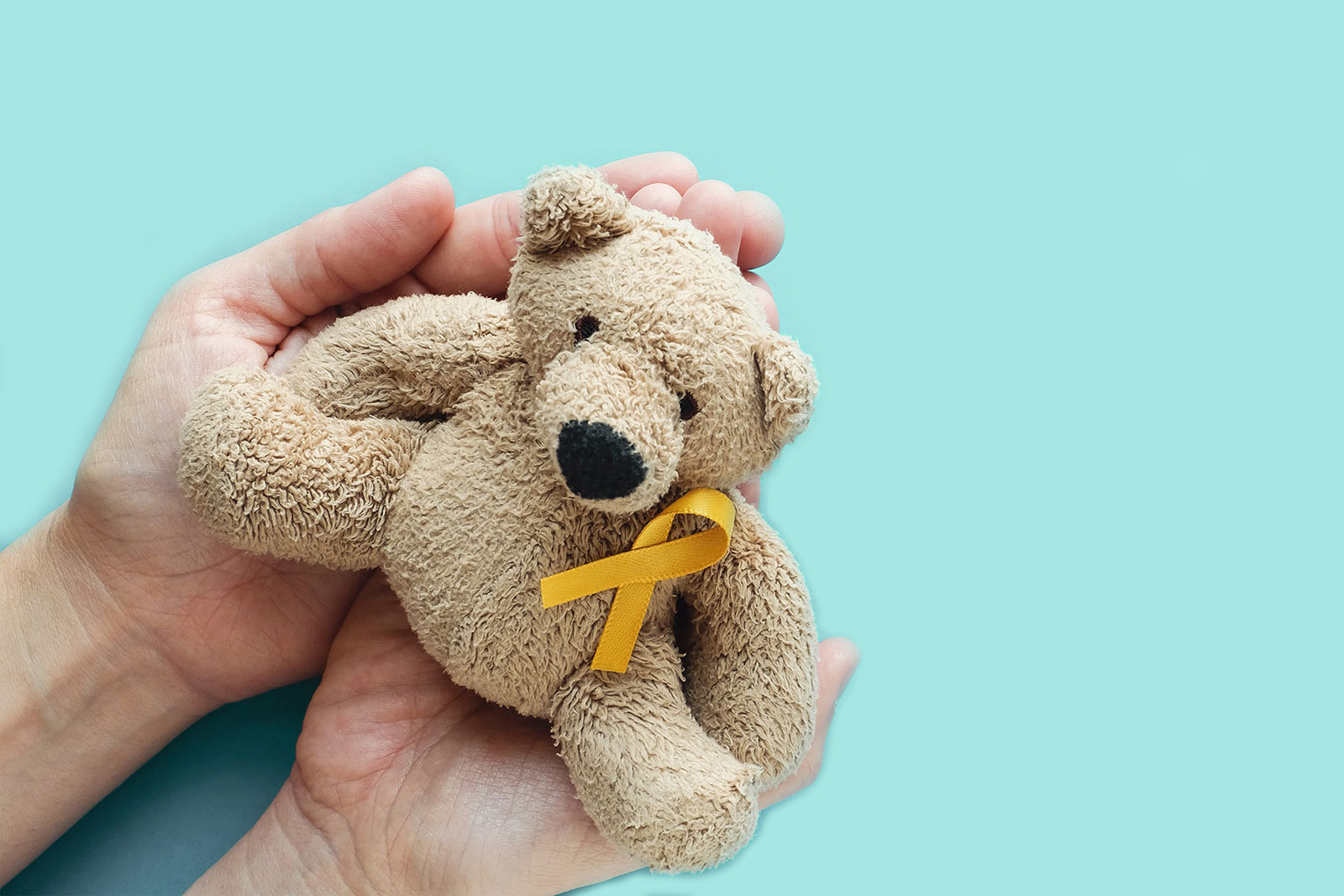Despite being the number one cause of death by disease among children, only 4 percent of federal cancer research dollars goes directly toward treating childhood cancer. According to the American Cancer Society, about 11,050 children (under age 15) in the United States alone will be diagnosed with cancer in 2020. And research for life-saving treatments continues to fall short. According to the National Pediatric Cancer Foundation (NPCF), fewer than 10 drugs have been developed for use in children with cancer since 1980, but hundreds have been created exclusively for adults.
Tiffany Smith, director of research at NPCF, says this is largely due to the patient population. “Because it’s such a small population with pediatrics […] honestly it’s not beneficial for most pharmaceutical companies,” she says. While pediatric cancer only accounts for about 1 percent of all diagnoses, pediatric cancer research is clearly necessary to save lives. In the mid-1970s, the five-year survival rate for children diagnosed with cancer was 58 percent. Today, thanks to advancements in research and treatment, it is 83 percent.
Surviving, however, is not the same as thriving. The childhood cancer survival population is close to 500,000 in the U.S. alone. But according to NPCF, more than 95 percent of childhood cancer survivors “will have a significant health-related issue by the time they are 45 years of age.” Why? Because they were treated for cancer.
According to a March 2019 article in Science magazine, cancer treatments like chemotherapy and radiation can trigger premature aging in healthy cells in children. “Damaged cells often enter senescence—cellular old age—as a protective mechanism that allows them to expend less energy,” the article states. In turn, these “senescent” cells communicate with the cells around them, influencing them to act similarly. In the article, Kiri Ness, a physical therapist and epidemiologist at St. Jude Children’s Research Hospital, says that after being treated for childhood cancer, patients seem “like they don’t ever become robust again.” Of survivors in their 20s, 30s, and 40s, she says, “They have wrinkled skin, they walk slowly, they’re weak, they have characteristic gait patterns that mostly elderly people have.”
Other negative health effects that arise later in life include heart failure, a second cancer diagnosis, infertility, impaired lung function and kidney disease, among others. A 2018 paper published in the journal Molecular and Cellular Pediatrics shares a disturbingly long list of adverse neurological effects of chemotherapy on children, including effects to memory, intellect, academic achievement and emotional health. The effects of chemotherapy “when allowed to operate on the developing brain of a child, have high potential to not only cause brain injury, but also alter crucial developmental events,” the paper says. It goes on to say that the nature of their findings confirm that the negative intellectual outcomes are due to cancer treatment, not the cancer itself: “Given that the tumor burden reflected by low versus increased risk did not affect IQ scores, the investigators attributed this adverse effect to treatment rather than to the disease burden.”
Childhood cancer research, says the paper, is “crucial to the development of cancer therapies that will spare the (central nervous system),” mitigating these neurological effects. However, “our understanding of how chemotherapy injures the pediatric brain, what the pathomechanisms of this injury are and what accounts for the higher vulnerability of children under six years of age remains limited.”
In the mid-1970s, the five-year survival rate for children diagnosed with cancer was 58 percent. Today, thanks to advancements in research and treatment, it is 83 percent.
For this and other reasons, pediatric cancer research is imperative to improve quality of life after childhood cancer. This is evidenced best by an anecdote in the Science article, which references a child diagnosed with Hodgkin lymphoma at 16. Due to a clinical trial conducted only about 10 years before her diagnosis, she was able to avoid chest radiation (previously considered standard of care for this diagnosis) that would have burdened her with a one-in-three chance of developing breast cancer by her mid-40s.
That is why conducting clinical trials is at the forefront of the NPCF’s mission. According to Smith, toxicity is not the biggest issue in regards to children being treated with treatments that were created with adults in mind. Rather, it’s the lack of funding to support clinical trials in pediatric populations. “Most pediatric trials are dependent on the results of an adult trial,” Smith begins. “An adult trial will be done for a type of cancer, and based on those results, it may or may not make it into the pediatric population.” But, unfortunately, “that can take up to 10 years to happen,” she says.
Smith continues: “One of the things that makes NPCF so unique is that we are a consortium of [around] 24 sites across the U.S., so all of the funding we receive goes to our research, and we open trials that are developed by our own pediatric oncologists.” Currently, the NPCF is running five clinical trials. It is organizations like NPCF along with other childhood cancer-specific foundations—like Alex’s Lemonade Stand Foundation, Bear Necessities Pediatric Cancer Foundation, and Cal’s Angels—that are rallying behind pediatric cancer research.
Until research meets the need, oncologists can prescribe therapies to applicable patients to help alleviate some of these debilitating long-term effects. An April 2018 report in the Journal of Pediatric Hematology/Oncology revealed that regular exercise can prevent damage to the heart from chemotherapy. In the experiment, mice were treated with chemotherapy known to cause damage to the heart. One group walked on a treadmill while receiving chemotherapy infusions. Two months after finishing treatment, it was found that the mice that exercised had hearts indistinguishable from animals that didn’t receive any chemotherapy at all.
But for treatments with few alternatives, the risk of damage must be weighed against the risk of non-treatment. Radiation, for example, is imperative in the treatment of some tumors, but there are few complementary therapies to help mitigate the negative effects of radiation treatment. Dr. Stewart Goldman of Ann & Robert H. Lurie Children’s Hospital of Chicago treats brain tumors in children. “Treating someone with radiation, which may cause long-term neurocognitive effects, is a mainstay of therapy, and an important part of therapy, and in many tumors can really lead to better outcomes,” Goldman begins, “but I like to say that the cost of the cure has a lifetime to be repaid, and I’m not talking about financially, I’m talking about what people have to live with.”
If childhood cancer treatment received adequate research dollars, perhaps childhood cancer patients could be spared the damage that leads to health issues later in life. “I don’t believe that any of our patients truly get away scot-free without any long-term sequelae (conditions which are the consequence of a previous disease or injury),” Goldman says. “What treatments we give to these kids today, they have to live with for a long, long time.”







